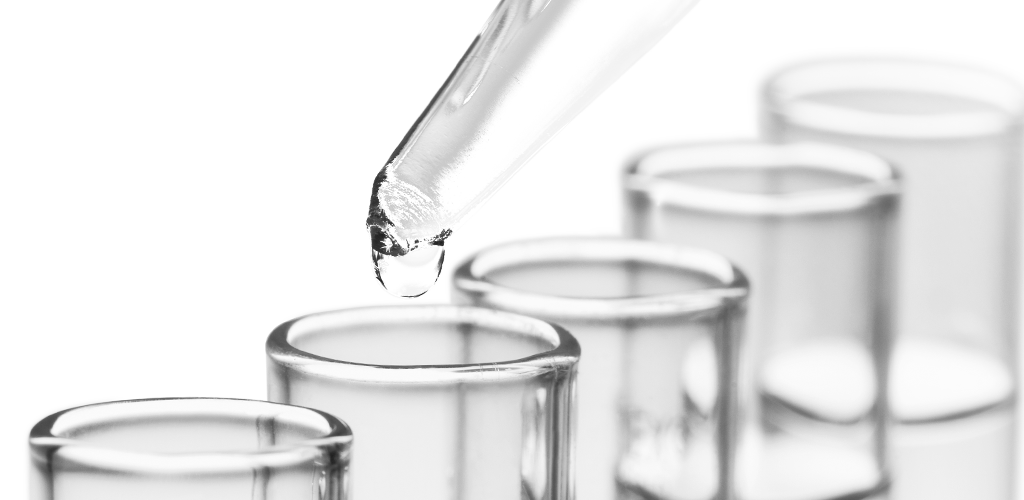Fibrinogen
Biochemistry
| Synonym | Factor I |
|---|---|
| Molecular mass | Aα-chain: 63.000 Da; Bβ-chain: 56.000 Da; γ-chain: 47.000 Da |
| Synthesis | Liver |
| Plasma concentration | 1.7 - 4 g/l Clottable fibrinogen 2.5 - 6 g/l Fibrinogen concentration |
| Half life | 3 days |
The dimeric glycoprotein fibrinogen consists of 2 Aα-, 2 Bβ- und 2 γ-chains. After cleavage of the fibrinopeptides A and B, the resulting fibrin monomers polymerize to form soluble fibrin. This soluble form is subsequently crosslinked to insoluble fibrin by factor XIIIa. Fibrinogen and fibrin can be cleaved by the fibrinolytic enzyme plasmin, resulting in fibrin(ogen) degradation products FDP. Fibrinogen can also be broken down by other proteases, e.g. PMN-elastase. Fibrinogen has various functions in plasma:
- Platelets are bound to fibrinogen and fibrin via the receptor GPIIb/IIIa.
- The fibrinogen concentration regulates the plasma viscosity.
- In cases of inflammation the fibrinogen concentration increases, as it is one of the acute phase proteins.
- Fibrin plays a major role in fibrinolysis, as fibrinolytic factors such as plasmin inhibitor, plasminogen and t-PA adhere to its surface and react with their targets.
Clinical significance
Low fibrinogen concentrations are seldom observed. When found, it is mainly in acute situations such as DIC, hyperfibrinolysis, liver damage and systemic fibrinolytic therapies. Acquired dysfibrinogenemias are more often seen than congenital dysfibrinogenemias, especially in liver disease. Increased fibrinogen concentrations are often observed. In acute inflammatory diseases, fibrinogen concentrations > 10 g/l have been observed. Fibrinogen is regarded as a risk factor for coronary and cerebral vascular disease, if the plasma level remains above 3 g/l over a longer period of time.
Indication
- Monitoring of DIC
- Monitoring of hyperfibrinolytic therapy
- Monitoring of fibrinogen substitution therapy
- Suspected hereditary fibrinogen deficiency and/or dysfibrinogenemia
- Increased fibrinogen concentrations in various diseases
Literature
- Müller-Berghaus G et al. Fibrinogen and its derivates. Excerpta med int Congr Ser 722, 1986.
- Dang CV et al. The normal and morbid biology of fibrinogen. Am J Med 87, 567, 1989.
- Lane DA et al. Acquired dysfibrinogenemia in acute and chronic liver disease. Brit J Haematol 35, 301, 1977.
- Wilhelmsen L et al. Fibrinogen as a risk factor for stroke and myocardial infarction. New Engl J Med 311, 501, 1984.
- Scarabin PY et al. Association of fibrinogen, factor VII and PAI-1 with baseline findings among 10500 male participants in a prospective study of myocardial infarction. The Prime Study. Thromb Haemost 80, 749-756, 1998.
- De Maat MPM et al. Fibrinogen. In: Jespersen J, Bertina RM, Haverkate F (eds.) Laboratory Techniques In Thrombosis: A Manual. 2nd revised edition of ECAT Assay Procedures. Kluwer Academic Publishers, 1999.

